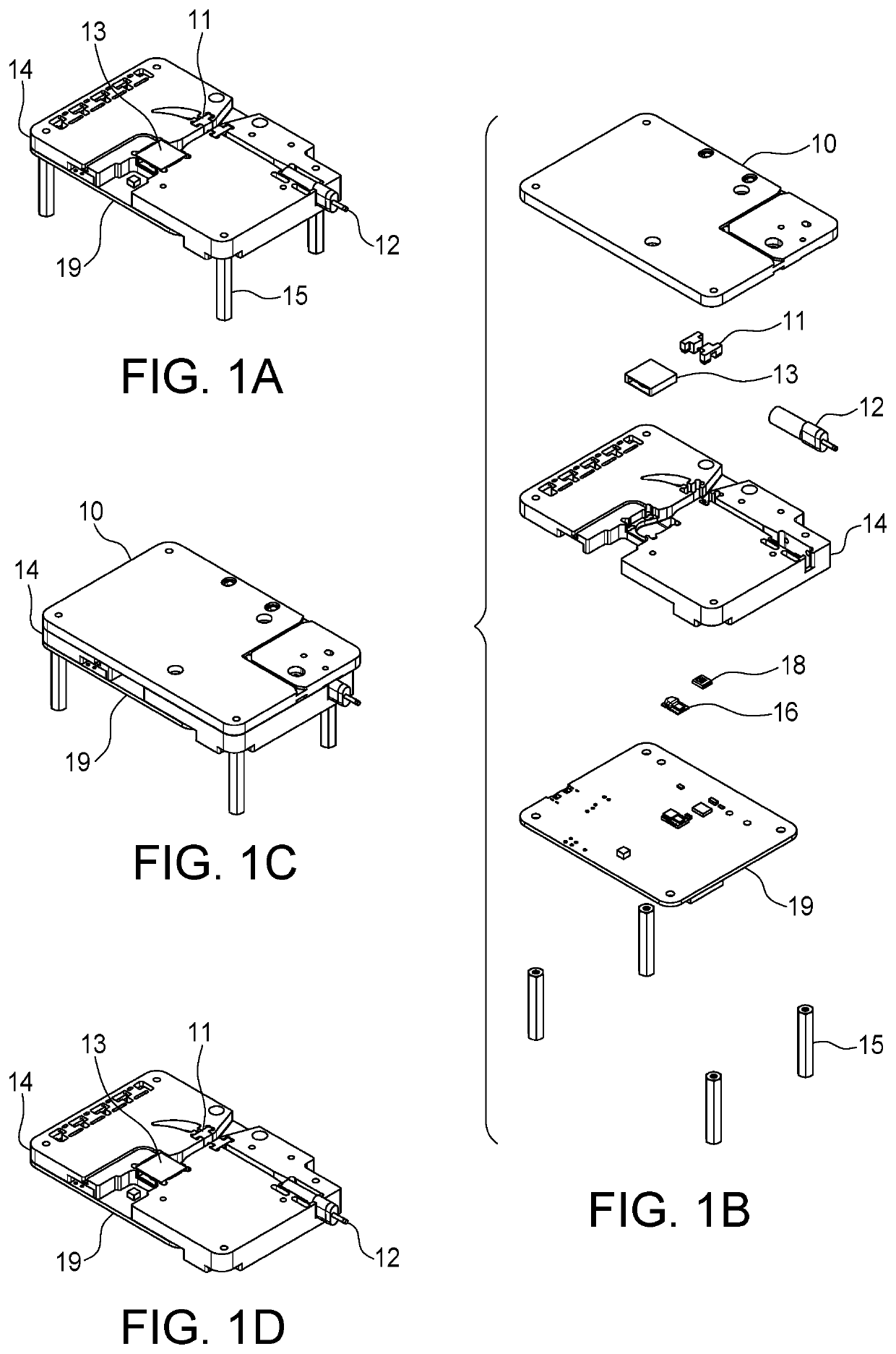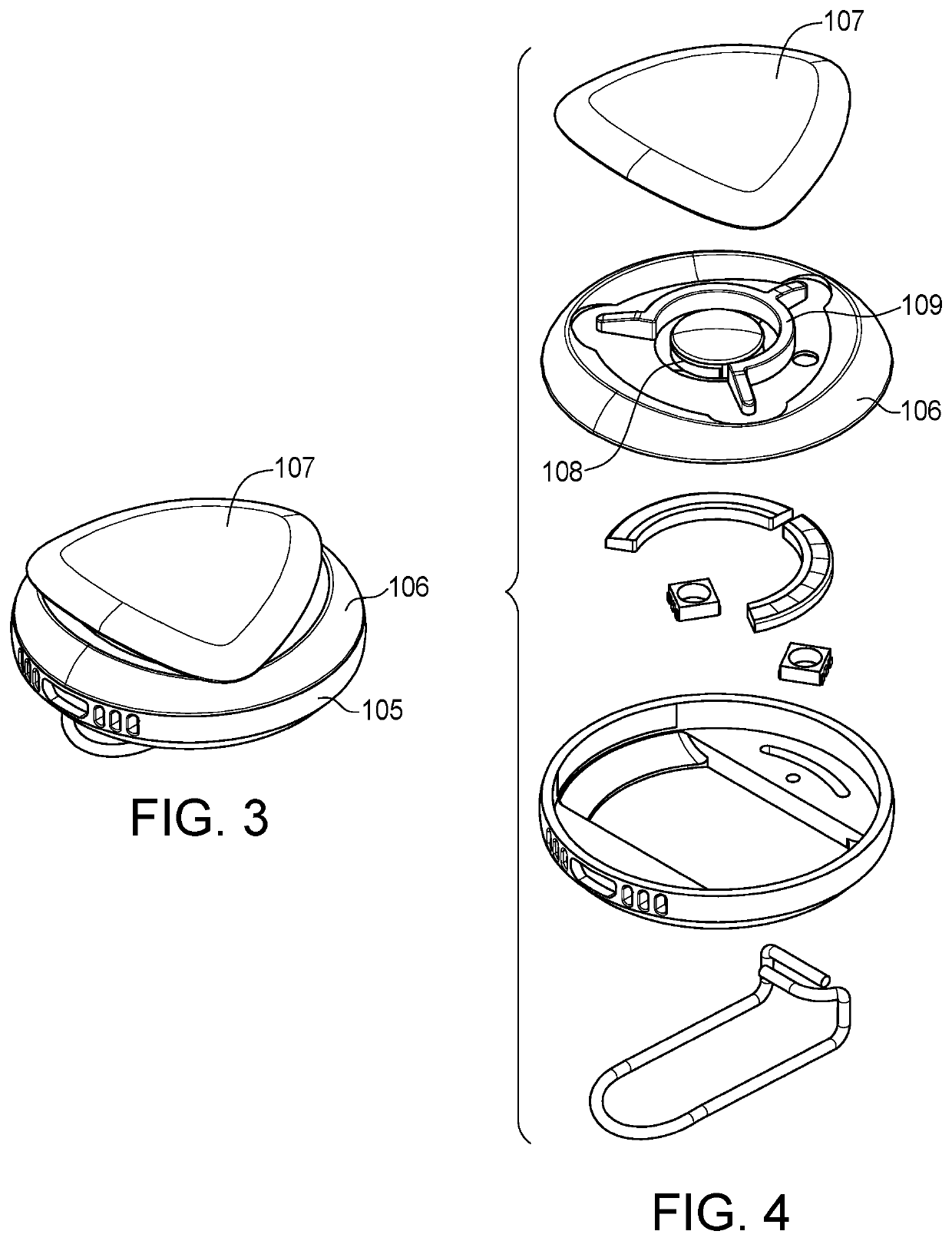Highly integrated optical particle counter (OPC)
a technology of optical particle counter and integrated technology, applied in the field of light scattering, can solve the problems of large amount of time consumed in methods, large amount of work done, and many workers on sick leave per day, and achieve the effect of reducing the required area and large sensing area
- Summary
- Abstract
- Description
- Claims
- Application Information
AI Technical Summary
Benefits of technology
Problems solved by technology
Method used
Image
Examples
Embodiment Construction
5.1 Enclosure
[0022]One embodiment of the enclosure may be illustrated in FIG. 1. The enclosure consists of three or more components which may be ultrasonically welded, screwed, clipped, or otherwise held together. These components may be constructed using plastic, but other materials are also suitable. The sensor in FIG. 5 may be partially or fully contained by this enclosure.
[0023]The three major components of the enclosure are the PCB 19, OPC frame 14 and the top cover 10. Other embodiments may consider just the PCB 19 and OPC frame 14. The top cover 10 may have one or more mounting / access feature for additional sensors. Other embodiments may have significantly different dimensions and geometry than shown in FIG. 1. Additional components may be used inside the enclosure other than the major components to aid in the function of the device.
[0024]Any part of the enclosure may have an engineered surface finish and / or selective metal deposition / plating for aesthetic and / or optical reas...
PUM
| Property | Measurement | Unit |
|---|---|---|
| focal length | aaaaa | aaaaa |
| flow rate | aaaaa | aaaaa |
| acceleration | aaaaa | aaaaa |
Abstract
Description
Claims
Application Information
 Login to View More
Login to View More - R&D
- Intellectual Property
- Life Sciences
- Materials
- Tech Scout
- Unparalleled Data Quality
- Higher Quality Content
- 60% Fewer Hallucinations
Browse by: Latest US Patents, China's latest patents, Technical Efficacy Thesaurus, Application Domain, Technology Topic, Popular Technical Reports.
© 2025 PatSnap. All rights reserved.Legal|Privacy policy|Modern Slavery Act Transparency Statement|Sitemap|About US| Contact US: help@patsnap.com



